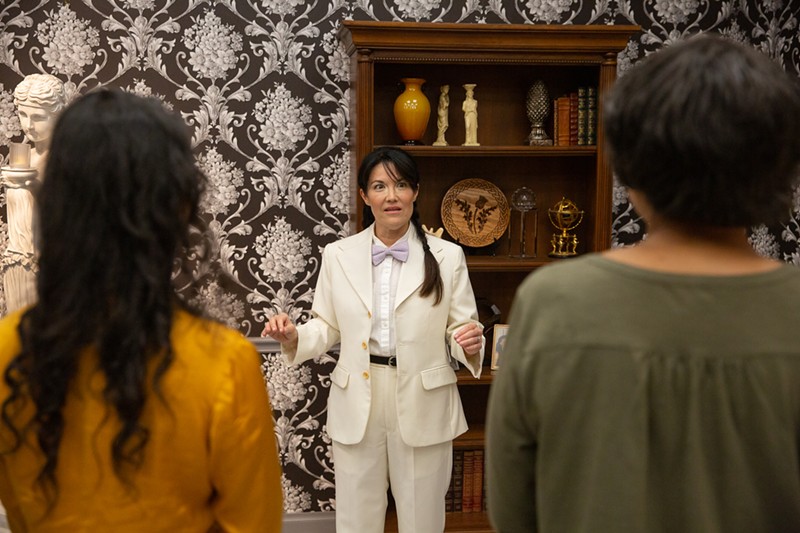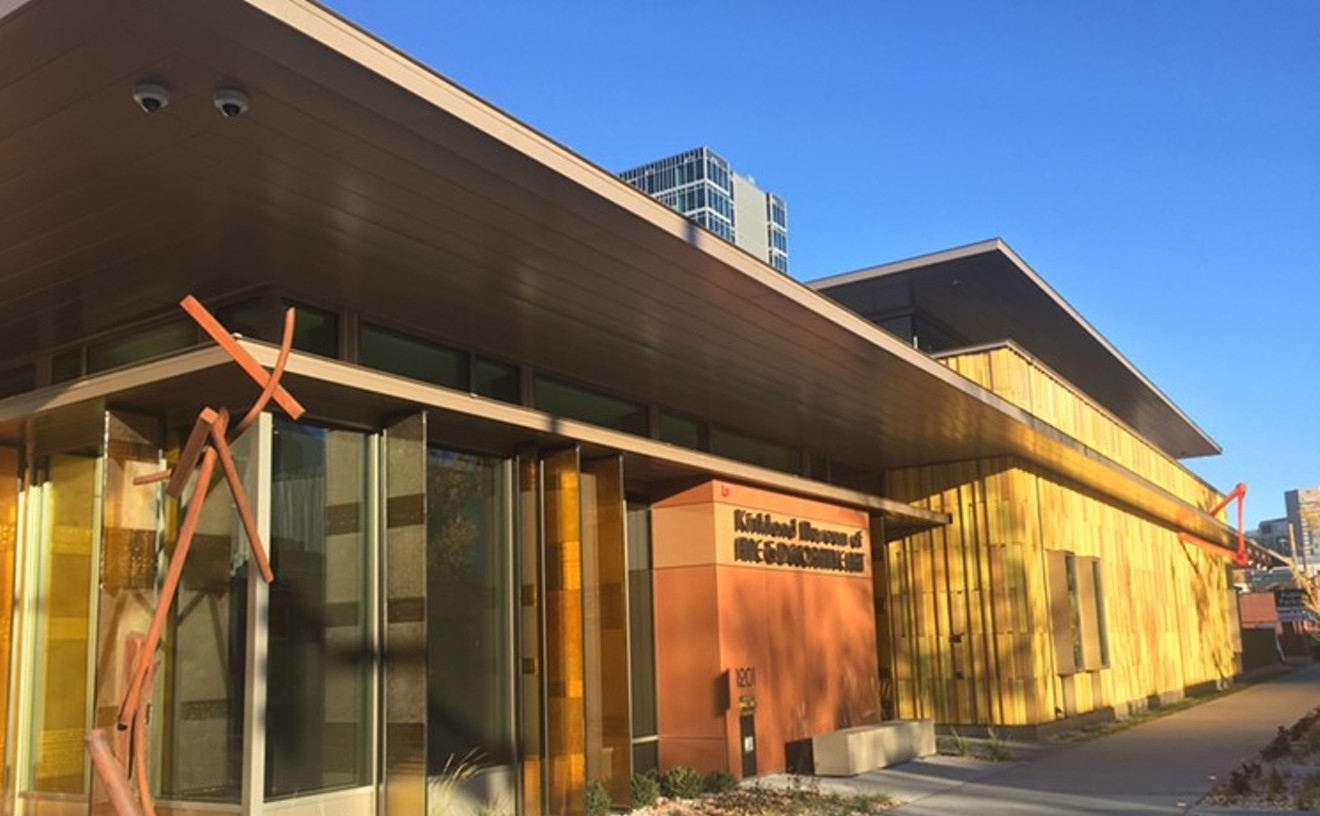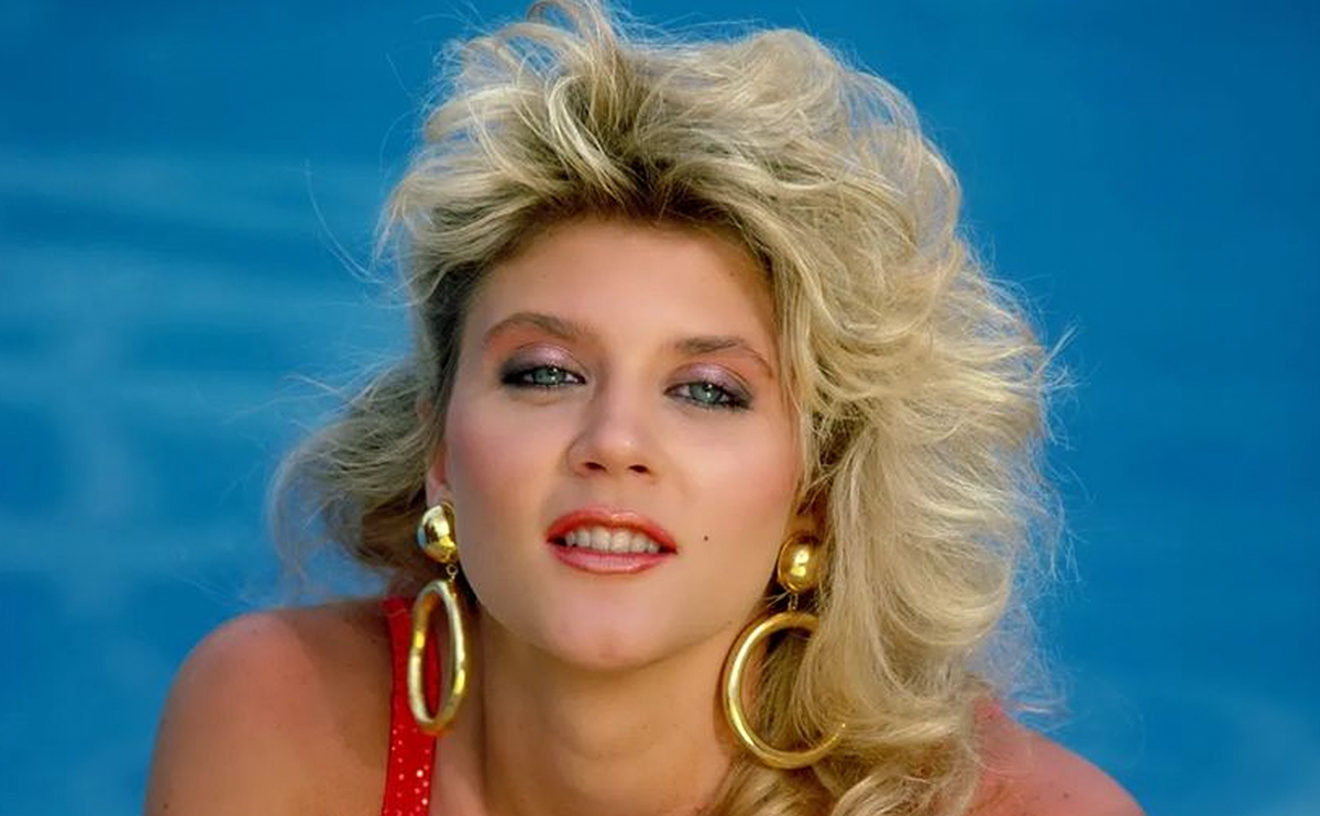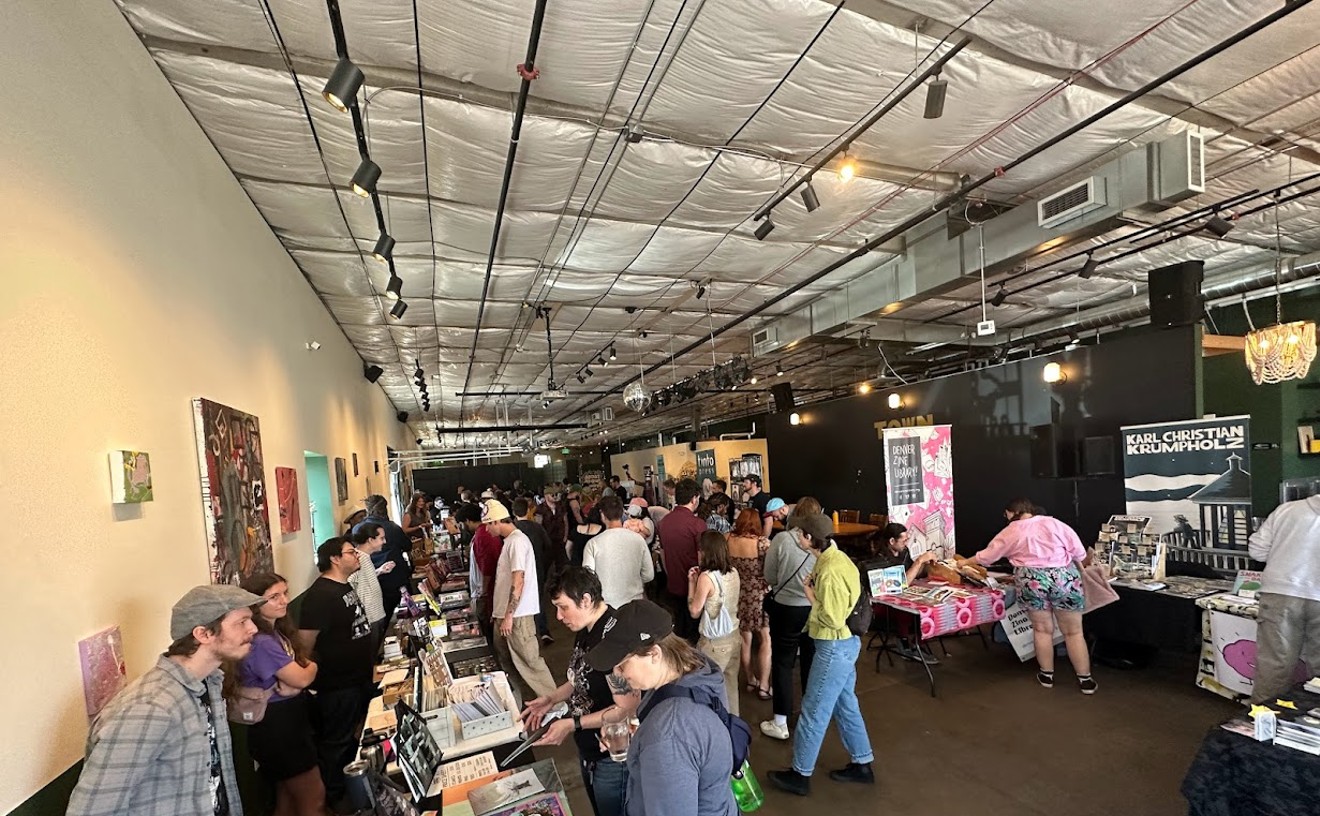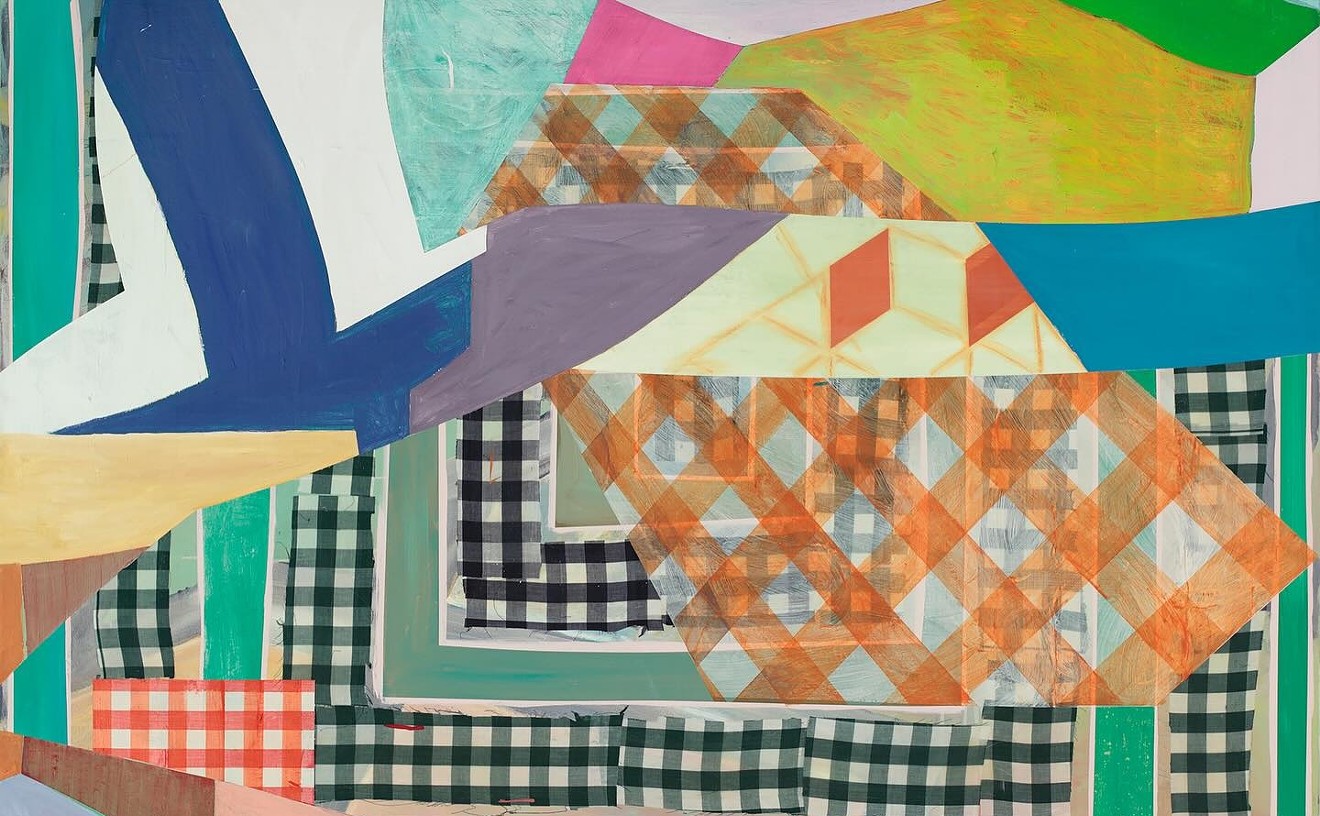Back in middle school, optical illusions would grab the attention of even the most disinterested student during art class. The most memorable was the checkerboard illusion, in which identical shades of gray color the squares on the board, but appear to be different shades because of light and shadow. When the teacher would move a gray sheet between the shadow and light, revealing that the squares were indeed the same color, it was as though my fellow students were stoners pondering whether a straw has one hole or two. The stream of "Wait, what?" and "How?" was endless.
Such awe-inspiring, innocent moments fill David Byrne and Mala Gaonkar's Theater of the Mind, which runs through mid-December in Denver. Those moments also make the experience more like walking through a middle-school science fair than an experiential theater production.
Gaonkar and Byrne, who is best known as the frontman for the Talking Heads, originally planned to create a neuroscience-based art show for a gallery, but after meeting with scientists in labs, they decided to create a narrative-driven theatrical experience. Charlie Miller of Off-Center, the Denver Center for the Performing Arts experimental program, approached the pair about bringing the production to Denver before the pandemic hit. "It was a pretty easy sell because of the track record that Off-Center has in pulling off ambitious immersive projects," Miller told us before the opening. But it took years for it to finally arrive.
The checkerboard illusion is actually the first twist you encounter after you're directed to select a name tag. Then you and your group begin the show in a room dressed up like a funeral home, where family photos and lit candles decorate various tables, and frankincense and cedar waft throughout the space. Notes with everyone's new names await atop stiff, wooden chairs lined in front of a coffin.
Out from that coffin pops your "guide," a character in a seersucker shirt and bowtie named David. While the guide is meant to be Byrne, a white male, the cast comprises both women and men of different races, playing into the overall theme of how we identify mind with body with self. The guide takes you and your group through the various sets that make up David's "memory palace," where optical and tangible illusions are bent into the plot to expose just how fallible our senses and memories are. And they really hammer home the point that you can't trust your senses. While the science speaks for itself, the notion is clearly stated in nearly every skit.
After David has informed us in the funeral home that he is dead and we are going back through his memories, we walk into his brain — a glowing pink, oval room with stools arranged on the sides. Once we're all seated, David turns off the lights and asks whether any of us have experienced hallucinations.
"I have," rings out a voice from my group. "During childbirth."
"Oh, interesting. Tell us about it."
"Well...during birth, I hallucinated my husband's head on my baby."
A long pause. "Okay. Anyone else?"
"I used to see a man in a hat in the corner of my room every night when I was falling asleep. Sometimes it was a comforting presence, but most of the time, it was absolutely terrifying."
Silence again.
"I went to a sweat lodge one time and felt like I was melting into the ground!"
Welcome to Colorado, David.
David then told us to hold our palms six inches from our faces, and that after he'd flashed the light, to slowly move our palms away. The flash led to a shadow of your palm being solidified in your sight, and you can't see your hand moving. Next, he had us do the same with a mirror, with the same effect — only this time, you were staring at a reflection of yourself. This led to another chorus of "Wait, what?" and "How?" and general, amazed laughter.
Another common illusion happens in the next room, which is configured as a discotheque where David used to deejay — and where he now is more like Bill Nye. Here is where Theater of the Mind really shows off its immersive chops: While many experiential productions tout themselves as immersive, they hardly engage all your senses, especially taste. But that's the sense at the forefront in this scene, where you eat a miracle berry and then suck on a lemon, which tastes sweet because of the berry's miraculin properties. Once again, I was more blown away by my fellow group members' shock — after all, this is a grade-school experiment, too.
Identity becomes the subject in question as the experience continues. The stunning sets are perfectly arranged to facilitate these Philosophy 101 experiences, which can sometimes be uncomfortable — such as spending ten minutes in complete darkness with complete strangers while discussing hallucinations.
A kitchen with giant furniture puts you in the perspective of a toddler, and when David meets his younger self, they get into a trite philosophical debate over whether they truly are the same person.
Perhaps it's the science-fair quality of the subject matter, but Theater of the Mind does inspire a childlike sense of wonder. There's a small thrill in witnessing these optical illusions once again and dusting off the imaginative concepts that they trigger. You may not leave the production questioning reality, but you'll be reinvigorated with a refreshed, clearer vision that not everything is what you expect it will be.
Theater of the Mind is open through December 18 at the York Street Yards, 3887 Steele Street. Tickets are $55 and up; get them here.
[
{
"name": "Air - MediumRectangle - Inline Content - Mobile Display Size",
"component": "12017618",
"insertPoint": "2",
"requiredCountToDisplay": "2"
},{
"name": "Editor Picks",
"component": "17242653",
"insertPoint": "4",
"requiredCountToDisplay": "1"
},{
"name": "Inline Links",
"component": "18838239",
"insertPoint": "8th",
"startingPoint": 8,
"requiredCountToDisplay": "7",
"maxInsertions": 25
},{
"name": "Air - MediumRectangle - Combo - Inline Content",
"component": "17261320",
"insertPoint": "8th",
"startingPoint": 8,
"requiredCountToDisplay": "7",
"maxInsertions": 25
},{
"name": "Inline Links",
"component": "18838239",
"insertPoint": "8th",
"startingPoint": 12,
"requiredCountToDisplay": "11",
"maxInsertions": 25
},{
"name": "Air - Leaderboard Tower - Combo - Inline Content",
"component": "17261321",
"insertPoint": "8th",
"startingPoint": 12,
"requiredCountToDisplay": "11",
"maxInsertions": 25
}
]

